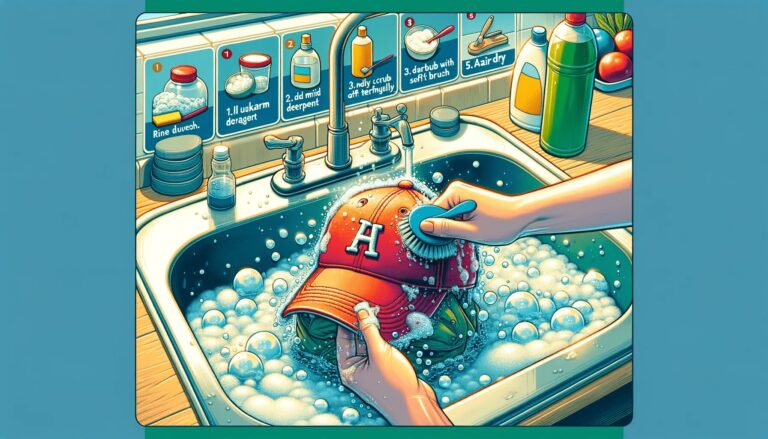What is a Good Batting Average for 13u Baseball?
As a parent or coach of a 13-year-old baseball player, you might wonder what a good batting average is at this age level. The batting average is a crucial statistic that measures a player’s success at the plate, but the expectations can vary depending on minor league baseball the level of competition.
For 13u (13-and-under) baseball, a batting average of .300 or higher is generally considered good. This means that the player gets a hit in 3 out of every 10 at-bats, which is a respectable rate for this age group.
However, it’s important to remember that batting average is just one measure of a player’s offensive performance, and other factors like on-base percentage and slugging percentage should also be considered.
In this article, we’ll explore the concept of batting averages for 13u baseball players.
We’ll provide insights into the average range, factors that influence batting performance, and tips to help your player improve their skills and achieve a desirable batting average.
Key Takeaways
- A good batting average at 13u is indicative of a player’s exceptional batting ability and consistency, essential for success in baseball.
- Technical skills such as understanding the strike zone and making contact are critical, while anticipation and fielding also play a significant role.
- Mental discipline, including time management and a balanced approach to life, is key for young athletes to thrive both on and off the field.
- Team dynamics contribute to individual performance, with synergy and learning from coaches enhancing a player’s batting capabilities.
- Setting realistic goals is important, with athletes encouraged to use their skills to further academic opportunities, acknowledging the rarity of professional prospects.
Understanding the Metrics of Success
Defining a Good Batting Average
In the context of 13u baseball, a good batting average is a key indicator of a player’s ability to make successful contact with the ball and reach base safely.
A batting average around .300 or higher in little league is generally considered solid for this age group. This figure suggests that the player hits successfully in three out of ten at-bats, which is a respectable rate of success at the plate.
Achieving a high batting average requires exceptional batting ability and consistency. It’s not just about swinging at every pitch; it’s about making smart decisions in the batter’s box and understanding the strike zone.
A player who can consistently make contact and get on base is a valuable asset to any pitcher of any team, as they contribute significantly to the team’s offensive strategy.
Here are some key points to remember about batting averages at the 13u level:
- A good batting average reflects a player’s skill and consistency.
- It’s important to focus on quality at-bats rather than just the number of hits.
- Batting averages can fluctuate, so maintaining a level of consistency is crucial for long-term success.
The Importance of On-Base Skills
While a good batting average is a clear indicator of a player’s ability to hit the ball, on-base skills are equally crucial for a player’s success.
These skills reflect a player’s proficiency in reaching base by any means necessary, which is vital for a team’s offensive strategy.
A player with strong on-base skills can contribute significantly to the team’s scoring opportunities, even on days when hits may be hard to come by.
Key on-base skills include:
- Plate discipline: Recognizing balls and strikes to draw walks.
- Batting eye: Identifying pitch types and locations to make quality contact.
- Speed: Utilizing quickness to beat out infield hits or bunt for a base hit.
- Situational awareness: Understanding when to take risks to get on base, such as during a hit-and-run play.
Developing these skills requires a combination of practice, mental acuity, and an understanding of the game’s strategic elements.
Players who excel at getting on base often find themselves in the heart of the action, setting the stage for RBIs and scoring runs, which ultimately leads to team victories.
Statistics Beyond Batting Average
While batting average is a fundamental indicator of a player better hitter’s ability to hit the ball, it’s not the only metric that matters.
On-base percentage (OBP), for example, includes walks and hit-by-pitches, offering a broader view of a player’s overall ability to reach base.
Slugging percentage (SLG) measures the total bases a player earns per at-bat each season, reflecting their power-hitting capabilities.
Other key metrics include:
- Runs Batted In (RBI): Indicating a player’s effectiveness at driving in runs.
- Stolen Bases (SB): Highlighting a player’s speed and base-running acumen.
- Walks (BB): Demonstrating patience and a good eye at the plate.
These statistics provide a more comprehensive picture of a player’s offensive contributions and potential performance. They are essential for evaluating young athletes’ development and setting goals for improvement.
Read Also: What is the Difference Between Softball and Baseball Bats
Technical Skills and Player Development
Mastering the Strike Zone
At the 13u level, a player’s ability to master the strike zone is a critical component of their success at bat.
Understanding the strike zone is not just about knowing the width and height of the zone; it’s about recognizing pitch patterns and adjusting swings accordingly.
Here are some key points to consider:
- Developing an eye for differentiating between balls and strikes.
- Learning to lay off pitches that are difficult to hit well.
- Practicing patience to wait for a pitch that can be driven.
Coach Sessa’s expertise in hitting fundamentals emphasizes the importance of a batter’s mindset.
A young player who can consistently identify pitches within the strike zone will not only improve their batting average but also contribute to the team’s offensive strategy by avoiding easy outs and potentially drawing more walks.
This skill set is often honed through drills that focus on finishing with a wrist snap and targeting the strike zone, as recommended by coaching resources like BRUCE BOLT’s favorite pitching drills for kids.
The Art of Making Contact
Making contact with the first batted ball, is a fundamental skill in baseball that requires precision and timing.
To excel at 13u baseball, players must focus on hitting the ball cleanly and consistently. One effective drill to improve this skill is the ‘Tennis Ball Drill.’
Here’s how it works:
- Write numbers or colors on tennis balls.
- As the balls are tossed to you, call out the number or color you see before making contact.
This exercise sharpens your visual acuity and reaction time, making it easier to track the baseball and hit it squarely.
Additionally, players should practice different types of swings to handle various pitches effectively. Whether it’s a fastball or a curveball, the ability to adjust and make solid, consistent contact throughout is crucial for a good batting average.
Anticipation and Fielding Prowess
In 13u baseball, anticipation and fielding prowess are critical skills that complement a player’s batting abilities.
A player who can anticipate the ball’s trajectory and position themselves accordingly will not only excel in the field but also gain insights that can improve their batting.
- Understanding the strike zone and the pitcher’s patterns enhances a player’s ability to predict the ball’s path.
- Regular batting practice can indirectly benefit fielding by honing hand-eye coordination and reflexes.
- Agility and footwork are essential for quick responses and effective fielding, which in turn can lead to better batting stance and swing mechanics.
Players who focus on these aspects are often the ones who stand out, not just for their batting average but for their overall contribution to the team’s success.
It’s the combination of batting practice, keen observation, and physical training that develops a well-rounded athlete capable of making an impact both at the plate and in the field.
Read Also: Who Bats First in Baseball Home or Visitor
The Role of Mental Discipline in Batting
Balancing Baseball with Life
In the pursuit of excellence on the baseball diamond, young athletes must maintain a healthy balance between their sport and other aspects of life.
The key is balance, ensuring that baseball enriches their lives without overshadowing other important commitments and interests.
Good judgment and time management are essential skills that can be honed through sports and applied to all areas of life.
- Understand the importance of a well-rounded lifestyle that includes education, family time, and other interests.
- Recognize that while baseball can be a significant part of life, it should not be the sole focus.
- Use baseball as a means to develop life skills that will be valuable long after the final inning is played.
This way, sports can become part of a balanced lifestyle that keeps kids active and healthy into adulthood.
By setting realistic expectations and focusing on personal growth, young athletes can avoid burnout and continue to find joy in the game.
Remember, the journey in sports is as much about personal development as it is just about the number of athletic achievement.
Time Management and Decision Making
In the realm of 13u baseball, effective time management is crucial for young athletes striving to improve their batting skills.
Balancing school, practice, and personal life requires a disciplined approach to ensure that each aspect receives adequate attention.
Here are some key strategies:
- Establish a consistent practice schedule that accommodates academic responsibilities.
- Prioritize tasks and set realistic goals for both baseball and schoolwork.
- Utilize downtime, such as travel to games, for studying or mental preparation.
Decision making, both on and off the field, impacts a player’s development. Making informed choices about training methods, such as incorporating hitting strategies from resources like ‘Get On-Time Archives,’ can translate practice swings into effective game performance.
Additionally, learning to make quick decisions during gameplay enhances a player’s batting and fielding prowess, contributing to overall success.
Cultivating a Consistent Batting Approach
Achieving consistency at the plate is a cornerstone of any successful hitter’s strategy. A good hitting approach is built on the foundation of muscle memory and repetition.
By focusing on consistent physical repetition, players can improve their swing mechanics and overall batting performance.
Here are 4 strategies to develop a consistent batting approach:
- Understand and master the strike zone to make intelligent decisions at the plate.
- Focus on making solid contact with the ball, rather than swinging for power.
- Study and anticipate the pitcher’s patterns to adjust your timing and approach.
- Balance baseball practice with other life commitments to maintain mental sharpness and avoid burnout.
Remember, the journey to becoming a more consistent hitter is a group effort, and guidance from experienced coaches can be invaluable.
Coach Sessa’s emphasis on hitting fundamentals and batter mindset is a testament to the importance of coaching in developing a consistent approach.
Read Also: Why Do Baseball Bats Have a Hole in the End
Team Dynamics and Individual Performance
The Impact of Team Synergy on Batting
In the realm of 13u baseball, the impact of team synergy on a player’s batting performance cannot be overstated.
When players support each other, share strategies, and communicate effectively, the entire lineup benefits.
Here are some key ways team synergy influences batting:
- Mutual encouragement boosts confidence at the plate.
- Sharing insights on opposing pitchers can lead to more successful at-bats.
- Collaborative practice sessions enhance skill development.
Young players need to understand that baseball is a team sport, and individual success is deeply intertwined with the team’s dynamics.
A supportive team environment fosters not only skill improvement but also a positive mindset, which is crucial for stepping up to bat with confidence.
Moreover, learning from teammates’ experiences and feedback can provide valuable lessons that contribute to a player’s growth and consistency in hitting.
Contributing to the Team’s Offensive Strategy
In the realm of 13u baseball, contributing to the team’s offensive strategy is about understanding one’s role in the lineup and executing plays that advance the team’s position.
Players must recognize the significance of each at-bat, whether it’s laying down a bunt to move a runner over or driving in runs with a timely hit.
Key aspects of contributing effectively include:
- Being aware of the game situation and what the team needs
- Executing the coach’s strategy, such as when to swing for the fences or when to focus on getting on base
- Supporting teammates by providing consistent performance and maintaining a team-first attitude
Coaches often emphasize the importance of being the best teammate possible, which extends beyond individual achievements.
It’s about the collective effort and understanding that each player’s actions contribute to the team’s success.
As players mature, they learn to balance personal development with the team’s objectives, striving for consistency at the plate and embracing the ‘big picture’ of the game.
Learning from Seasoned Players and Coaches
The journey to a good batting average at 13u baseball is not just about individual talent; it’s also about learning from those who have already walked the path.
Seasoned players and coaches bring a wealth of experience that can be invaluable to young athletes.
They provide insights into the nuances of the game, from swing mechanics to pitch recognition, which are crucial for improving performance.
Here are some ways young players can benefit from their guidance:
- Observing and emulating the practice routines of experienced players.
- Engaging in discussions about game strategies and decision-making processes.
- Receiving personalized feedback to refine techniques and correct errors.
By tapping into the knowledge of seasoned veterans, young players can accelerate their development and enhance their understanding of the game.
This mentorship is a cornerstone of not just improving batting averages, but also fostering a deeper love and respect for baseball.
Setting Realistic Goals and Expectations

Navigating the Journey Beyond Youth Baseball
As young athletes approach the end of their 13u baseball experience, the transition to high school baseball becomes the next significant milestone.
This period is marked by new challenges and opportunities that shape a player’s development both on and off the field.
- Adjusting to high school baseball is a transformative experience that requires a combination of skill development, mental resilience, and a positive attitude.
- Players must acclimate to a more competitive environment, often with increased expectations from coaches and teammates.
- It’s essential to embrace a growth mindset, as the skills and strategies that work in youth baseball may need refinement to succeed at the high school level.
Parents play a crucial role during this transition, supporting their children’s journey while allowing them to take ownership of their athletic and personal growth.
The lessons learned through sports, such as teamwork, discipline, and perseverance, will continue to be invaluable as players redefine themselves and look forward to who they want to become.
Using Athleticism to Enhance Academic Opportunities
The synergy between athleticism and academics can be a powerful catalyst for youth development.
Baseball, in particular, can instill discipline and a strong work ethic that are invaluable in the classroom. The lessons learned on the diamond often translate into life skills that foster success beyond the field.
- Discipline and Work Ethic: The rigorous training and commitment required in baseball can enhance a student’s focus and dedication to their studies.
- Teamwork and Leadership: Participating in sports teaches young athletes about collaboration and taking initiative, skills that are highly regarded in academic settings.
- Time Management: Balancing sports and schoolwork necessitates efficient time management, a skill that will benefit students throughout their educational journey.
It’s essential to recognize that while athletic prowess may open doors, it is the hard work in the classroom that will ultimately unlock future opportunities.
Whether or not a professional or college baseball career is in the cards, leveraging athletic discipline can pave the way for academic achievements and a successful life.
Understanding the Rarity of Professional Prospects
While the dream of playing professional baseball is a powerful motivator, it’s crucial to recognize the extremely slim chances of making it to the Major Leagues.
The path to professional baseball is fraught with challenges and only a select few make it to the top echelons, as evidenced by the exclusive list of top prospects on platforms like MLB.com.
Here are some points to consider:
- The journey to professional baseball requires not just talent, but also a deep commitment and a life centered around the sport.
- Academic achievements can provide a solid backup plan, as the reality is that most players will need to pursue careers outside of baseball.
- Young athletes need to set realistic goals that include alternatives to a professional baseball career, ensuring they have a path to success regardless of the outcome on the field.
Parents and coaches play a pivotal role in helping young players understand these realities, encouraging them to work hard both on the field and in the classroom.
Ultimately, the goal is to prepare them for all of life’s possibilities, not just the slim chance of becoming a professional athlete.
Conclusion
In summary, for 13u baseball, hitting .300 or better is a sign of good performance. It’s a benchmark that players can aim for to show they’re doing well at bat.
Remember, while stats like batting average are helpful, they’re just one part of the game.
Practice, teamwork, and having fun are also key. Keep working hard, and don’t sweat it if you’re not there yet. Baseball is a game of growth, and every player has their own pace.
Keep swinging, and enjoy the game!
Frequently Asked Questions
What is considered a good batting average in 13u baseball?
A good batting average in 13u baseball is typically around .300 or higher. This indicates exceptional batting ability and consistency, as achieving a high number of hits is indicative of a player’s skill at making contact with the ball and getting on base.
How does understanding the strike zone contribute to a player’s success?
Understanding the strike zone is crucial for a player’s success. A player who can accurately judge the strike zone can make better decisions at the plate, leading to more contact and higher quality hits, without overswinging to compensate for lack of power.
How important is on-base percentage compared to batting average?
On-base percentage is an important metric as it accounts for a player’s ability to get on base by any means, including walks and being hit by a pitch, in addition to hits. It often provides a more comprehensive picture of a player’s offensive contribution than just batting average.
How can players balance baseball with other aspects of life?
Players can balance baseball with other aspects of life by learning good judgment, time management, and setting appropriate priorities for playing time. Understanding that only a small percentage will play beyond high school or college, it’s important to maintain a balance and focus on academics as well.
What opportunities can athletics provide beyond playing professionally?
Athletics can provide opportunities to enhance academic pursuits through scholarships and college offers. It’s important to use athleticism to further education, as the reality is that very few will make it to the professional level.
How can teamwork influence an individual player’s batting performance?
Teamwork can significantly influence an individual’s batting performance. A supportive team environment can boost confidence, while learning from seasoned players and coaches can help improve technical skills and strategic understanding, leading to better performance at the plate.







